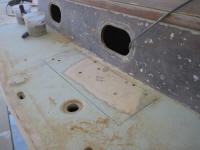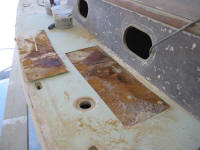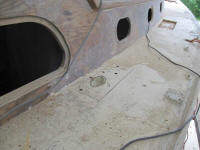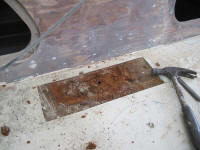
110 Cookson Lane | Whitefield, ME 04353 | 207-232-7600 | tim@lackeysailing.com
On the heels of yesterday's deck inspection, I got started by cutting open the deck in the areas I'd previously marked: two on the foredeck, one on the port sidedeck, and two on the starboard sidedeck. In each case, I cut open the top skin with a saw to expose the core beneath. The top skin, which was surprisingly thin--perhaps a maximum of 3/16"--came away easily.
Inside, I found variable core conditions. There was damp to wet core in each area, as I'd previously determined, but the overall scope of the problem was generally minor, and by design the areas I opened were somewhat larger than the true extent of the compromised core. Even where the core was wet, it remained sound, with no extensive deterioration or rot.
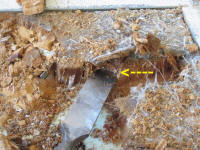
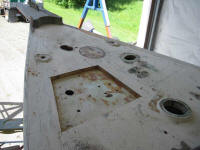
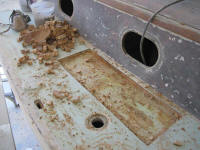
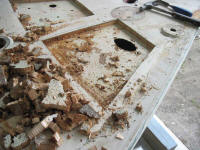
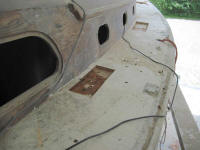
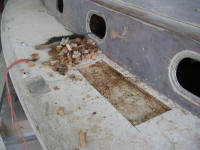
I removed the old core within the confines of each cut, taking pains to avoid damaging the thin inner deck skin (which appeared to be a single layer of roving). In the foredeck areas, in way of the bow cleat locations, as well as in the after section of the starboard sidedeck, I found an abundance of an odd, unknown fill material, which I'd first noted questioningly when I drilled test holes the day before.
This material had a generally dense foam-like appearance, but was much harder than foam, though friable and brittle. It surrounded the two bow cleat locations, as well as a molded recess in the deck on the starboard side where a bronze fitting had been installed.
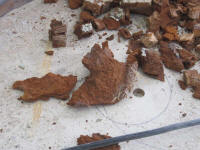
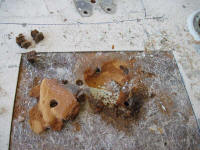
After digging out the old core, I cleaned up and sanded the exposed inner skins, and sanded tapered edges around the openings to prepare for the new top skin material later. For the moment, I only tapered the two openings on the port side, as I'd not started sanding the deck paint on the starboard side yet. I'd take care of the three openings on that side then.
I left the small amount of core in the space alongside the cabin trunk for the moment to support grinding the taper above, but would likely dig it out during a later step, since there was dampness there and the moisture in that area probably originated at the seam between the cabin trunk and deck--which, as more and more signs were pointing, seemed to be clearly an aftermarket modification undertaken at some point in the boat's life. Additional documentation suggested that the new cabin trunk was somewhat wider than the original version, with the sidedecks cut down accordingly.
My current thinking, given that three of the five areas on deck which I'd had to open for recore were located adjacent to the cabin trunk, was that perhaps when the deck was modified, the cut in the sidedecks, which might have exposed core material, may not have been sealed properly, allowing this moisture infiltration in some areas. Perhaps further steps in the various repairs would clarify some of these questions.
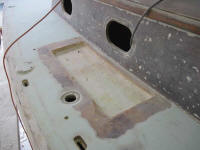
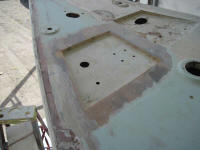
With the areas requiring recoring now opened and relieved of their old core--excepting, for the moment, the poop deck, which I'd address separately--I continued paint removal and sanding work on the port side, wrapping up the foredeck and the narrow aftermost portion of the deck outboard of the cockpit.
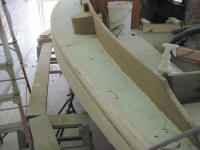

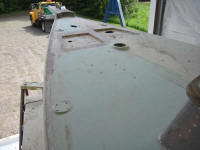
Total Time on This Job Today: 6.75 hours
